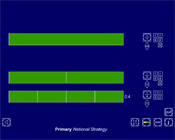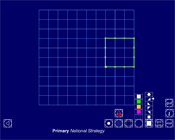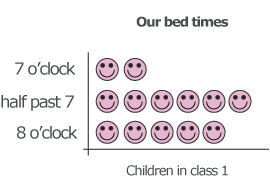Consolidation and practice
These resources are to support children in guided or independent work. Roll over the highlighted resources for a description.
Fractions

This interactive teaching program (ITP) is an ICT-based tool to support the exploration of parts of numbers. Fractions ITP allows the child or teacher to represent and compare fractions on fraction strips. The displayed strips can be labelled as a vulgar fraction, a decimal (to three decimal places) or a percentage, and the ratio of yellow to green parts of each strip can also be displayed.
Area

This interactive teaching program (ITP) is an ICT-based tool to support the exploration of number, shape and space and problem solving. Area ITP allows the child or teacher to place counters or colour in whole or part cells on a grid, pinboard or blank screen, or to define a shape, using an elastic band.
Opportunities to use and apply
Possible contexts include:
- finding fractions of amounts, e.g. A chocolate bar has 12 pieces. I eat 3/4 of the bar. How many pieces are left?
- exploring use of fractions in everyday contexts, e.g. When someone says they want the bigger half of the cake, is this correct?
- measures, e.g. On a metre stick, show me 1/10 of a metre. Point to another division. What fraction of the metre is it?
- data handling, e.g. What fraction of the children in class 1 go to bed at about 8 o'clock?

Confirming learning
Ask probing questions such as:
- Which would you rather have, 1/4 of a bar of chocolate or 1/8 of a bar of chocolate? Why? Draw a sketch to explain your answer.
- Complete the shading on this diagram so that 1/2 is shaded yellow. Describe the shaded part in another way.

- Suggest a fraction that is bigger than 1/2. How do you know?
- Take a sheet of paper. Fold it in half, in half again and in half again. Open up the sheet and colour in three sections. What fraction of the paper have you shaded?
- What fraction is the arrow pointing to?



 Counting and understanding number
Counting and understanding number




